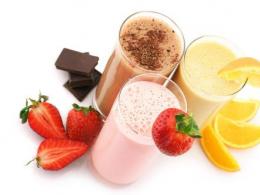Nutrition for gaining muscle mass.
Warmly and cordially greet you, my dear!
As you probably know, Friday at our project is dedicated to daily bread, in particular, today we will continue, or rather complete (I would still like it :)) a series of two articles on the topic of nutrition for gaining muscle mass. In the course of our saga, we will analyze mass-gaining strategies, get acquainted with the main “mass products” and, in conclusion, draw up a specific nutrition plan for transforming ourselves from a hoodie into a rocker.
So, make yourself comfortable, we'll begin.
Nutrition for gaining muscle mass. The practical side of the issue.
Well, before proceeding to the essence of this note, testify to your respect for the previous one, located here. In it, we analyzed the theoretical foundations of muscle growth, the mechanisms of hypertrophy, and got acquainted in detail with the role of hormones in the growing process. In general, the article turned out to be sensible, as they say, a must have for reading. Today we will not pour water (although it would not hurt to loosen up the material a little :)) and immediately rush off the bat and start with ...
Note:
For better assimilation of the material, all further narration will be divided into subchapters.
6 nutritional strategies for gaining muscle mass
What is mass gathering? This is the process of creating conditions for the body for its volumetric growth. These include 7 the following nutritional strategies - tools for influencing the weight of an athlete. Knowing them, every person who wants to become bigger will be able to choose the best way for himself to increase.
No. 1. Eat more of the right carbs every day
When you are in the mass recruiting stage (or just you are an ectomorph and decided to increase), the body needs slow (medium/long release) energy sources in the form of complex carbohydrates. The latter include: brown rice, oatmeal, buckwheat, quinoa, barley. You can also increase your intake of starchy carbohydrates, such as whole grain breads and coarse pasta.
The tactics of distributing carbohydrates during the day should comply with the “UBVM” rule - more in the morning, less in the evening. In other words, if per day we have 5 meals, then the first, second, third, should be the largest, and the last two cut down on the coals, or without them at all.
For numbers, for clarity, we can give the following example.
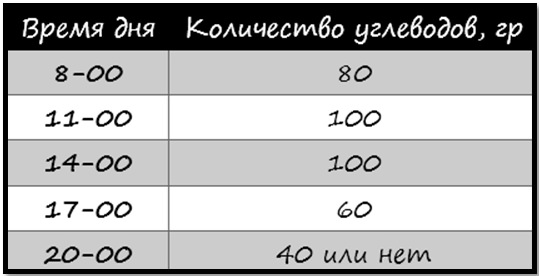
Amount of carbohydrates for those who want to get bigger (ectomorph) , is about 3,5-4 gr on 1 kg of weight, i.e. body weight athlete 60 kg, must eat 210-240 grams of carbohydrates. It is important to distinguish between the weight of the product and the required amount of carbohydrates, i.e. in 100 grams of buckwheat contains 65 grams of carbohydrates to get values in 3-3,5 gr on 1 kg of weight, then you need to eat by weight of the order 350 grams of buckwheat per day. In some cases, the values for carbohydrates can be much higher, of the order 4-6 gr or less 2,5-3 gr, everything is individual here and depends on the characteristics of the metabolism of a particular person and his ability to accumulate / store fat.
The amount of carbohydrates for those who have a balance in priority (mesomorph): is about 3-3,5 gr on 1 kg weight. If in the course of such a proportion your anthropometry has changed, in particular, your waist has increased, then you need to slightly cut carbohydrates. If the weight remains unchanged, then reconsider the proportions in the direction of their increase.
As for the use of simple carbohydrates, it is better to load them before / after a workout, for example, in the form of, or protein and a sweet carbohydrate (dextrose, sucrose, fructose).
No. 2. Increase your calorie intake
For growth, you need to create a calorie surplus, i.e. consume more than spend. However, calorie content needs to be increased in the right ways, and not through various goodies / sweets.
Number of calories for those who want to get bigger (ectomorph): is a plus 20-25% to the base level. That is, if you have been consuming 1500 kcal, then to increase it is necessary to switch to 1800 kcal. It is better to do this gradually, increasing the volume of the portion, conditionally instead of 6 tablespoons of rice, put 8, or instead 100 gr breasts eat 150 gr, or all together. Regarding the required caloric content for mass gain, you can use the rule of thumb with the following mathematics - 30-35 kcal for each 1 kg weight.
The amount of carbohydrates for those who have a balance in priority (mesomorph) , is about plus 10-15% to the base level. Here the calorie math is as follows − 25-30 kcal for each 1 kg weight.
The calorie numbers are adjusted in one direction or another, depending on the change in physique.
Number 3. Increase the number of meals
Nonsense, but an increase in average daily meals, for example, with 3-4 before 5-6 allows you to both lose weight and get bigger. Therefore, regardless of your goal, increase the number of meals, slightly reducing their single servings. (compared to the option 3-4 tricks).
Number of meals for those who want to get bigger (ectomorph): the time period is 2-2,5 hours. Moreover, most of the calories, about 70-80% , should fall on solid meals at the rate of 350-400 kcal per reception. Those. body weight athlete 60 kg, with daily calorie intake 2100 kcal, should have 4 solid meals per 1500 kcal (on average each 350-400 kcal), and remaining 600 kcal must be obtained from sports nutrition, i.e. administration in liquid form.
Number of meals for those who prioritize balance (mesomorph) - time span is 2,5-3,5 hours. Due to the lower metabolic rate, the number of doses may be less than that of ectomorphs by 1-2 reception (for example, 1 hard and 1 liquid).
No. 4. Increase your intake of healthy fats
It is very important that the diet is balanced not only in nutrients such as proteins and carbohydrates, but also in fats. In particular, you need to consume more polyunsaturated (PUFA) and saturated fats. The former are found in fish, oils (linen, olive / camelina), nuts (almonds), the latter in dairy products, dark poultry, red meat, eggs, and they help the body synthesize hormones, in particular the anabolic hormone.
Amount of fat for those who want to get bigger (ectomorph) , is about 20-25% from the daily calorie content, and 10-15% should be saturated. For example, from 2100 kcal, order 500 kcal should come from fat (350 kcal per saturated). Fats are a great source of calorie boost for hardgainers because they 1 gram when decomposed releases 9 kcal, as opposed to proteins/carbohydrates, which provide only 4 kcal.
The amount of fat for those who have a balance in priority (mesomorph) , is about 15-20% from daily calories (10 % - saturated 5-10% – PUFA).
The right fats can be obtained very easily - just don't de-fat the foods. Consume whole milk / cottage cheese with a certain percentage of fat content, red fish, as well as fish oils and oils.
No. 5. Increase pre/post training load (sports nutrition)
For ectomorphs (especially) pre- and post-workout meals are very important, so adjusting them will help volume increase. In particular, sports nutrition during these periods will help to qualitatively solve the issues of mass gain.
The amount of sports nutrition for those who want to get bigger (ectomorph) , is about 250-300 calories before and after workout (near 4-5 kcal per 1 kg weight). Of these, about 70% must come from carbohydrates and 30% - for squirrels (in our example it turns out 90 kcal or 22,5 gr), i.e. sports nutrition with such a ratio of nutrients, in particular a gainer, is an ideal intake both before and after physical activity.
The amount of sports nutrition for those who have a balance in priority (mesomorph) , is approximately the same order of magnitude in terms of calories, with some shift in the proportion of the gainer to the protein side, in particular, the ratio is as follows - 40% squirrel and 60% carbohydrates.
No. 6. Use "liquid food"
One of the most difficult processes for people who want to gain muscle mass is homing a thuja hucha of food. Ectomorphs find it hard to force themselves to eat. (especially in the morning), and here also, in order to recruit, we need 5-6 tricks. The way out in this situation is the liquid form of meals / snacks. It can be homemade protein shakes, sports nutrition, or simply ground into soup in a blender with the addition of water, food, or soup as such. In other words, solids should be interspersed with liquids throughout the day.
When to use liquid food if you want to get bigger (ectomorph)?:
- after waking up;
- before / after training;
- in between meals during the day;
- before bedtime.
When to use liquid food if balance is a priority (mesomorph)?:
- after waking up;
- before / after training;
- before bedtime.
So, we are done with the strategies, now let's talk about ...
The ratio of BJU for gaining muscle mass. What is it?
It’s worth saying right away that there is no one ratio that would work for everyone, but there is a certain average model for BJU, from which you can build on and find your percentage corridors for nutrients. In other words, you take the model proposed below as a basis and empirically try to understand how it works for you and what adjustments it requires. (if required at all).
The average BJU model for gaining muscle mass looks like this.
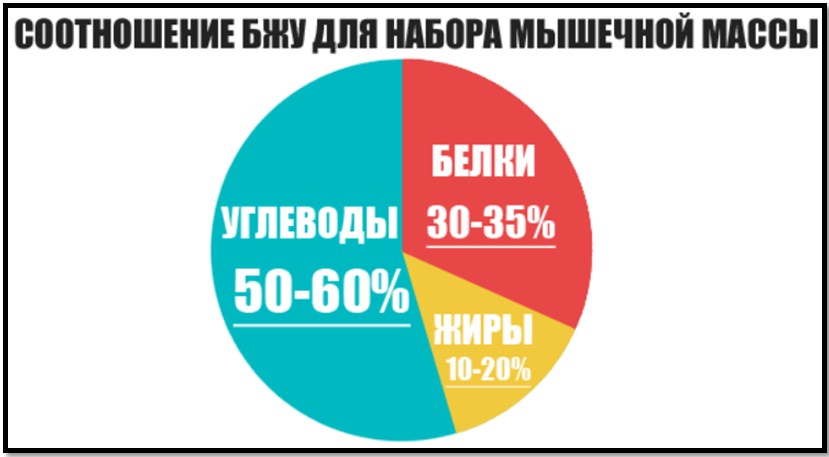
In it, you can operate with three components - carbohydrates, proteins and fats. How to do it? Very simple. In particular, follow these instructions:
- measure yours - in particular, waist size,% fat and those muscle groups that you train for mass;
- make a diet (meal plan) with the indicated ratio of nutrients: proteins 30-35% , fats 10-20% and carbohydrates 50-60% ;
- follow him 1,5-2 weeks;
- take new measurements;
- evaluate the results - in general, the percentage of fat / waist should decrease, and the volumes (measurements in cm) of muscle groups should increase;
- make adjustments to the BJU ratio if the data has not changed/changed in the wrong direction;
- Repeat the steps above until you find a ratio that works specifically for you.
Conclusion - play with nutrient parameters in small corridors until you find your BJU ratio for gaining muscle mass.
We figured it out, now we turn to the highlight of the program, namely ...
TOP 10 products for gaining muscle mass
Now we will find out which foods contribute to a set of muscle mass, so we write it down.
No. 1. lean beef
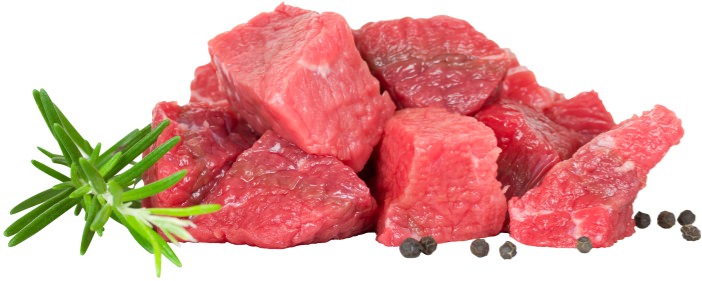
Provides the body with high-quality protein, supplying it with 10 essential amino acids found in 18-25 grams of protein per 100 gr product. Meat supplies minerals such as heme iron, zinc, phosphorus, as well as B vitamins, in particular B6, B12 and PP. A high level of lean protein delivers amino acids to the blood, which work with the transport hormone insulin to promote muscle growth.
An indispensable condition for including beef in your grocery basket is its leanness, i.e. it is necessary to monitor the percentage of its fat content. The fat content is optimal. 5-7 gr on 100 gr of the product, and this option corresponds, for example, to beef stroganoff or steak.
No. 2. Chicken
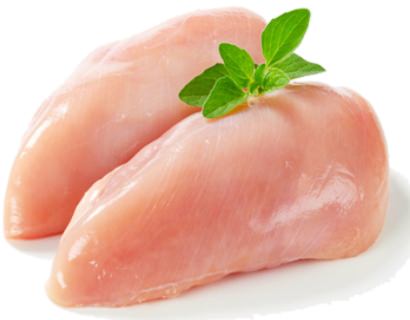
An excellent source of high-quality protein, which is important for creating new contractile structures of muscle tissue and gaining mass. Provides the body with 20-25 grams of quality protein per 100 gr product. Chicken is rich in the amino acid leucine, which increases protein synthesis and is key to building muscle.
The general category of the product is specially taken without indicating that it is only fillets, or breasts, or other parts of it, because it all depends on when and by whom it will be eaten. In particular, an ectomorph can afford more fatty parts of a chicken - thighs, wings, breast flesh with skin. For everyone else, it is advisable to resort to more lean options, such as: fillet, minced meat or skinless meat.
Number 3. Fish
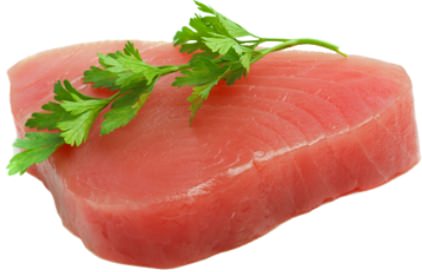
A lean protein source rich in Omega 3/6 polyunsaturated fatty acids. Such fats contribute to the loss of fat mass and ensure the proper functioning of body processes, in particular, metabolism. Fats also reduce muscle inflammation and keep levels of the hormone cortisol in check, preventing it from rising. Fish contributes to the development and strengthening of the athlete's bone apparatus and is an excellent source of vitamin D.
The general category of the product was specially taken without specifying specific types of fish, because it all depends on the body type and the body's ability to utilize nutrients. In particular, ectomorphs should pay attention to more fatty varieties of fish from red breeds - sockeye salmon, salmon. The choice of all the rest should be shifted towards more lean, white varieties - carp, mullet, cod, tuna. Of course, we are not talking only about fresh fish, there are also canned food - fillets, pieces without oil.
No. 4. Eggs
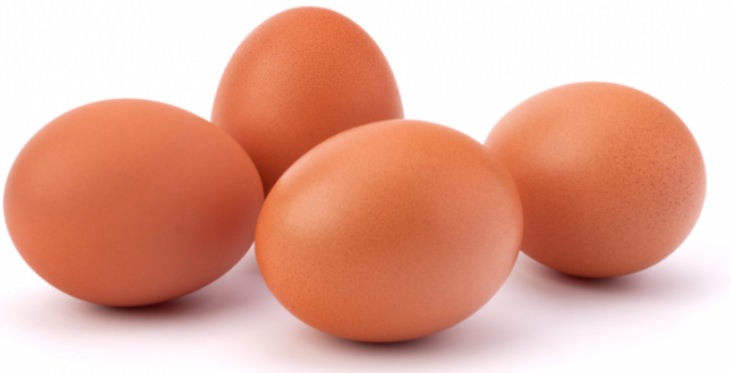
Cheap source of protein with high biological value. Contains 9 essential amino acids, choline, essential fat, cholesterol for testosterone synthesis and vitamin D. 100 product gr (2 eggs of medium size/category C1) account for 12 grams of protein and 10 fats. Often, many people throw out the yolks from the eggs and eat only the whites, this is not true, in general, during the mass gain period, the ratio should be followed 1 to 3 , i.e. on the 3 protein should account for one yolk. Ectomorphs can afford the ratio 2 to 4 .
No. 5. Cottage cheese
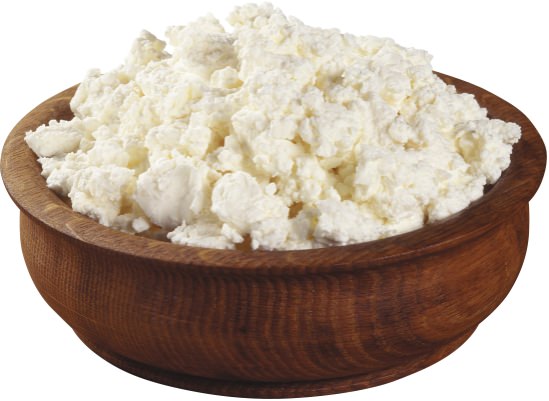
Pure source of long lasting protein casein. Cottage cheese is also a great source of vitamin B12, calcium, and other important nutrients that help build a "composite" body. The product is low calorie (depending on fat content) and supplies 15-18 grams of protein per 100 gr product.
No. 6. oysters
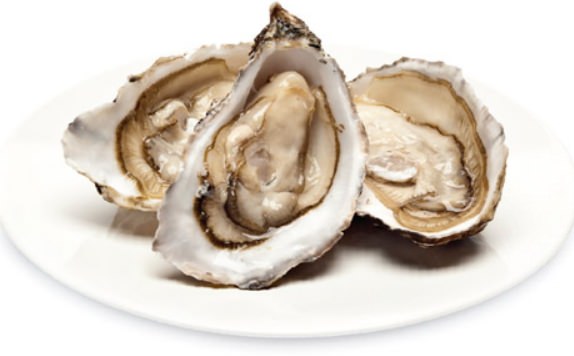
An extremely underused seafood product that, by right, is bypassed by most. Oysters supply 20 grams of protein and only 5 grams of fat, while also providing the body with magnesium and zinc, essential minerals for protein synthesis. Of course, due to the relatively high price, oysters are not a product for every day, but including them in your diet on a periodic basis is quite an option.
No. 7. Oatmeal
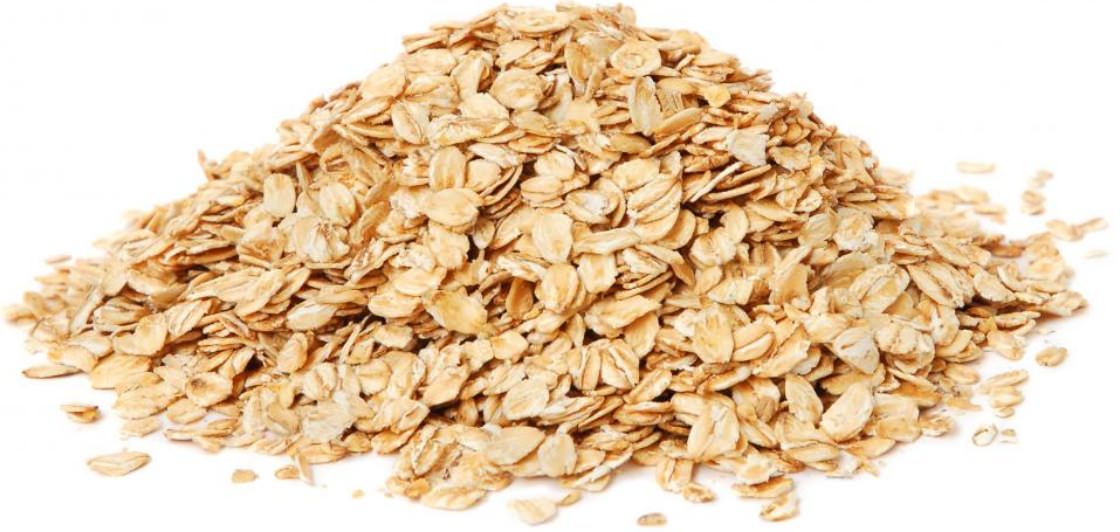
Oatmeal sir! An excellent source of slow carbohydrates with an average. Carbohydrates provide energy support to the body in filling it with energy and are involved in the utilization of protein sources as energy agents. Oatmeal gives the body satiety and is a “slim” carbohydrate, because. allows you to get rid of fat mass, while contributing to the set of muscle. 100 product gr (oatmeal-flakes) contains 12 grams of protein and 65 g carbs per total calorie content 350 kcal.
No. 8. Almond
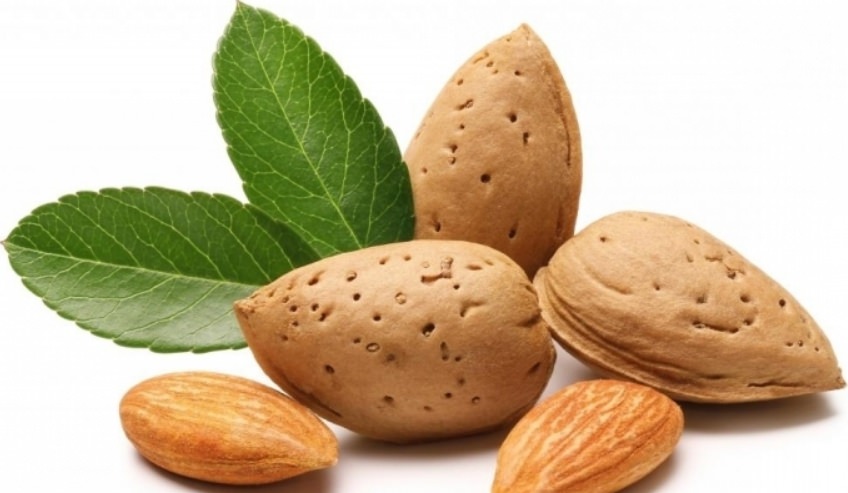
A complex product at the stage of mass gain, due to the combination of proteins, proper fats and high calorie content. On the 100 g product, total calories 600 kcal, accounted for 19 g protein, 53 gr fat. Almonds are an excellent source of monounsaturated fats and magnesium, which plays an important role in metabolism and protein synthesis.
No. 9. Beet
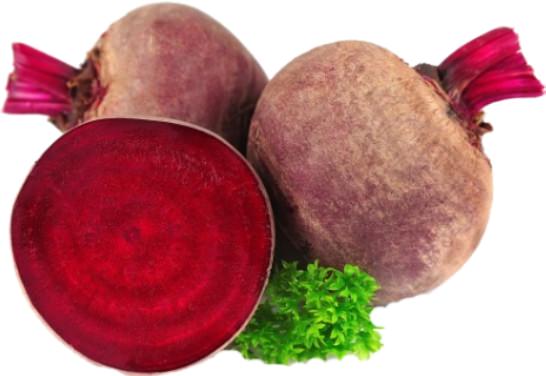
Unusual twist, right? A number of studies have shown that the consumption of beetroot (including juice) improves the results of training. The data says that beet juice intake on 38% increases blood flow to the muscles, in particular to the white muscle fibers that are responsible for speed and strength. Eating boiled beetroot has been shown to increase endurance and lower blood pressure in athletes. Thus, before training, sometimes instead of a gainer / protein, you can use the services of beets.
№10. Garlic

Blimey! Grass/plant with virtually no calories. carbohydrates, proteins and fats contributes to a set of muscle mass. And this is true, in view of the ability of garlic to radically change the hormonal background and set it up for mass gain. To stimulate growth, it is not enough just to consume the right foods, certain hormonal prerequisites must be created in the body, the proper hormonal background. Studies have shown that a high intake of garlic, when combined with a high protein diet, can increase testosterone levels and reduce muscle breakdown.
In other words, garlic creates an anabolic environment. (is an anabolic supplement) and makes proteins perform their building functions more efficiently. Thus, the use of garlic cloves in conjunction with meat, for example, during cooking (meat roast with garlic) promotes better muscle growth.
The above list of products, of course, is not complete, but this is a fundamental snack that should be present in your grocery basket for mass gain.
If we consider other products, then in general we can form such a scheme.
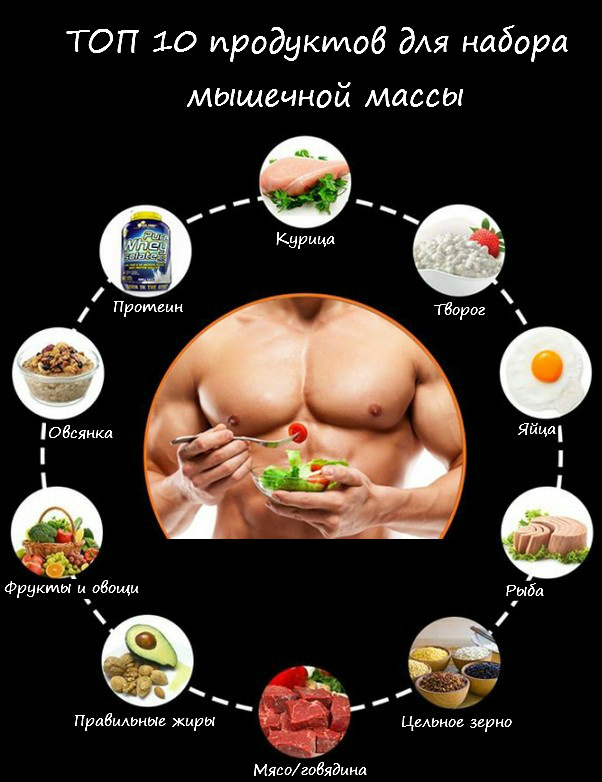
As for the various categories of products that are optimal for gaining muscle mass, they can be summarized in the following table.
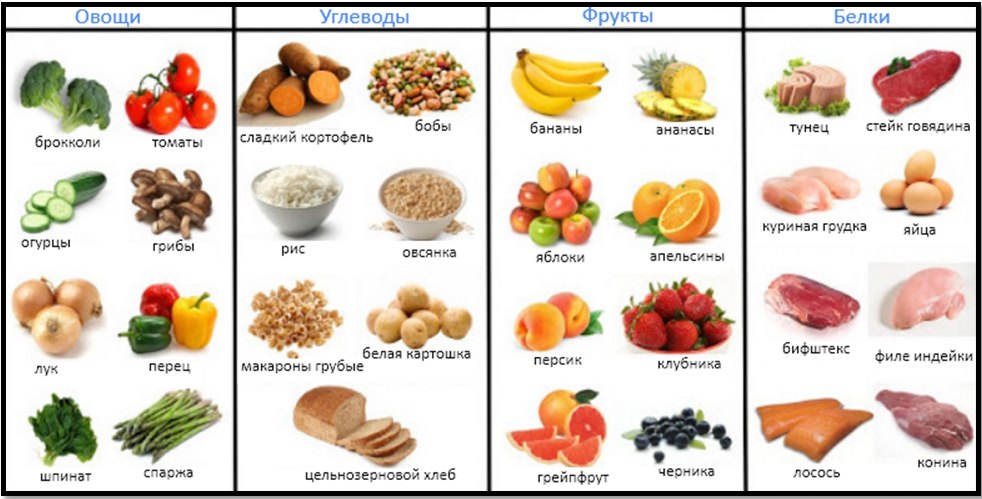
Because Since our goal is to gain muscle mass, and proteins are the main building block in this matter, it is necessary to thoroughly understand the sources of protein and know the ratio of BJUK for each specific product that can potentially be included in the food basket of the mass set. Therefore, the following information will come in handy for you, it will help you form protein tricks and calculate their mathematics.
![]()
Although proteins rule the ball of mass gain, you should also not forget about energy sources - carbohydrates in the form of cereals. Without the support of charcoal, proteins will not be able to provide the desired increase effect. So include the following cereals in your grocery basket.
intermediate products (in terms of BJU ratio), which can also be used during the period of gaining muscle mass, are nuts. However, when including them in your diet, you need to remember their high calorie and fat content. If used incorrectly, they can become a “non-childish” tool :). Their main types are.
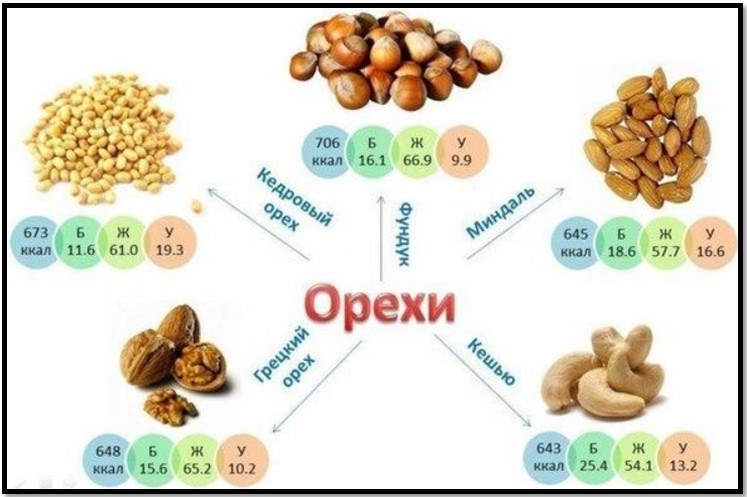
So, we have sorted out the main hamster-mass-gathering products, now let's reflect all our research in the form of a specific ...
Meal plan for mass gain
The following PP will help you decide on the tactics / strategy for drawing up such a plan for yourself and your daily routine, training.
Technical specifications:
- the goal is a set of muscle mass (including fat);
- initial/target weight – 54/64 kg;
- contingent - ectomorphs, people who find it difficult to gain weight;
- training days - Monday, Wednesday, Friday;
- training time - morning, 8-30 ;
- lights out - 00-00 ;
- the ratio of BJU per 1 kg of target weight: 1,9-1,3 gr (B) / 4-2,5 gr(y) / 0,7-0,5 gr (W) .
The meal plan itself 3 day looks like this.

Note:
It must be understood that it is impossible to talk about the rigid limits of nutrients on 1 kg body weight is the same for everyone, i.e. for each specific individual, the values are different and are selected empirically. The following BJU values for mass gain can serve as starting points: proteins - from 2 gr, fats - from 0,5 gr, carbohydrates - from 2,5-3 gr.
All you need is to draw up your meal plan for your daily routine / gym visits (time / days) for 7 days and follow it for at least 2-2,5 months. The first visual results will begin to appear from 2 weeks of stable visits to the gym and following the PP. After this period, you take measurements (do anthropometry) and compare with original data (before they started following the PP). If, in fact, there was no increase in volumes, then increase the protein and / or carbohydrate component of the diet. On average, the optimal value is the increase 300-500 g per week.
Well, now you know what foods provide mass gain and approximately know how to make a nutrition plan to solve this problem. The only thing left is discipline, but with this, I think, my dear, you have no problems, or do you? :)
Afterword
The last serious nutritional note of the year has come to an end, and we have analyzed the nutrition for gaining muscle mass. As always, it turned out to be voluminous, but all the questions were sorted out, and nothing was missed. By the way, it seems to me that from one reading you have gained a couple of net kilos, come on, stand on the scales ... what are they showing? If everything is the same, then it still makes sense not only to read, but also to do, or rather hamster, bon appetit!
That's all for now, until Wednesday!
PS. And how do you eat on the mass, do you have your favorite dishes?
P.P.S. Attention! 20.12 opportunity will become available (Last in the past year) sending questionnaires for and meals. I will be glad to our joint work!
With respect and gratitude, Dmitry Protasov.




